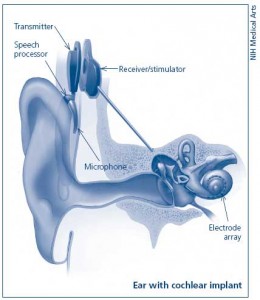Now Hear This: Cochlear Implant Inventor Wins Lasker Prize
Imagine life without sound.
That’s the reality for individuals who are deaf or hard-of-hearing. They miss out on conversations, concerts, and cars screeching around corners. For children, deafness impairs their ability to understand spoken language and can limit their school success and career choices.
Three scientists and engineers developed a device to allow hundreds of thousands of profoundly deaf people to hear. Called cochlear implant, it is the first medical apparatus to restore a human sense. Inventors Graeme M. Clark (Emeritus, University of Melbourne), Ingeborg Hochmair (MED-EL, Innsbruck), and Blake S. Wilson (Duke University) won the 2013 Lasker~DeBakey Clinical Medical Research Award for their work. 
Click here to read more about the three Lasker Award winners and their work on cochlear impants, or watch a video interview with them. See how assistive hearing devices have evolved from the “ear trumpet” to the cochlear implant, visit the Smithsonian’s Lemelson Center exhibit on “Inventing Ourselves.”
Filed under: Special Features
Tags: adaptive technology, assistive technologies, Biomedical Engineering, cochelear implants, deaf, disabilities, Electrical Engineering, hearing, Ingeborg Hochmair, Lasker Prize









